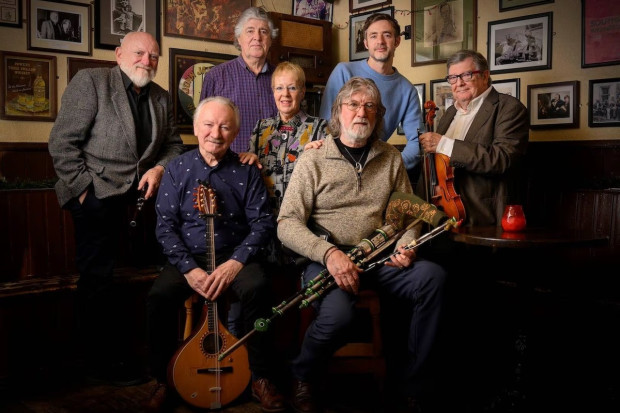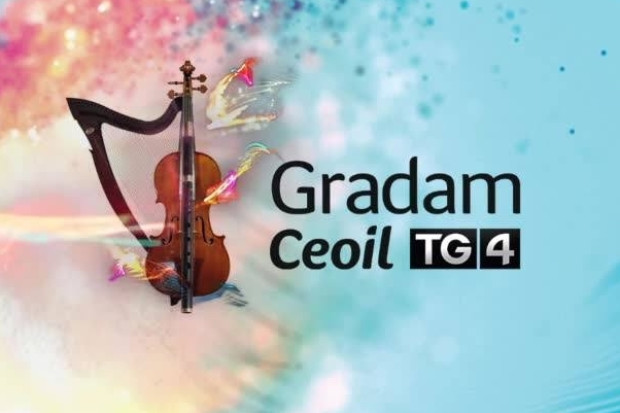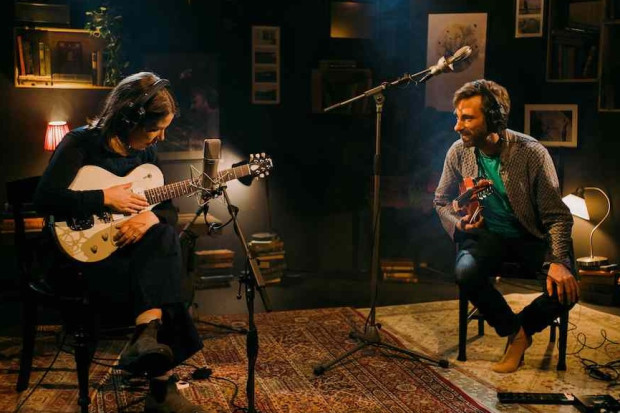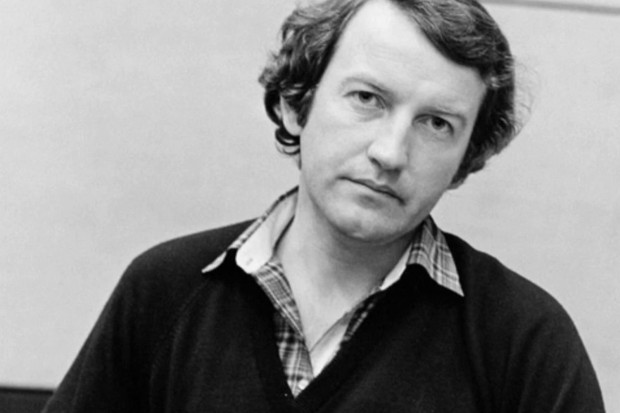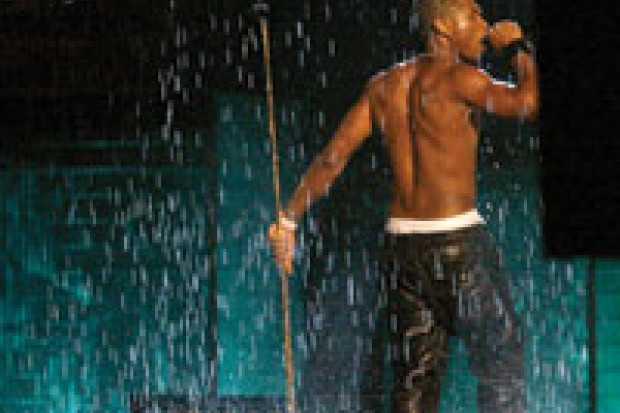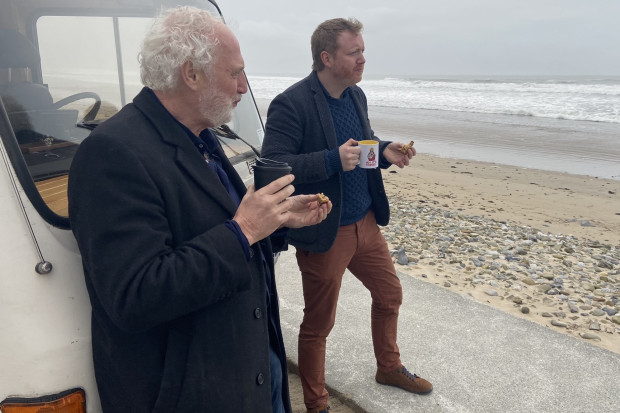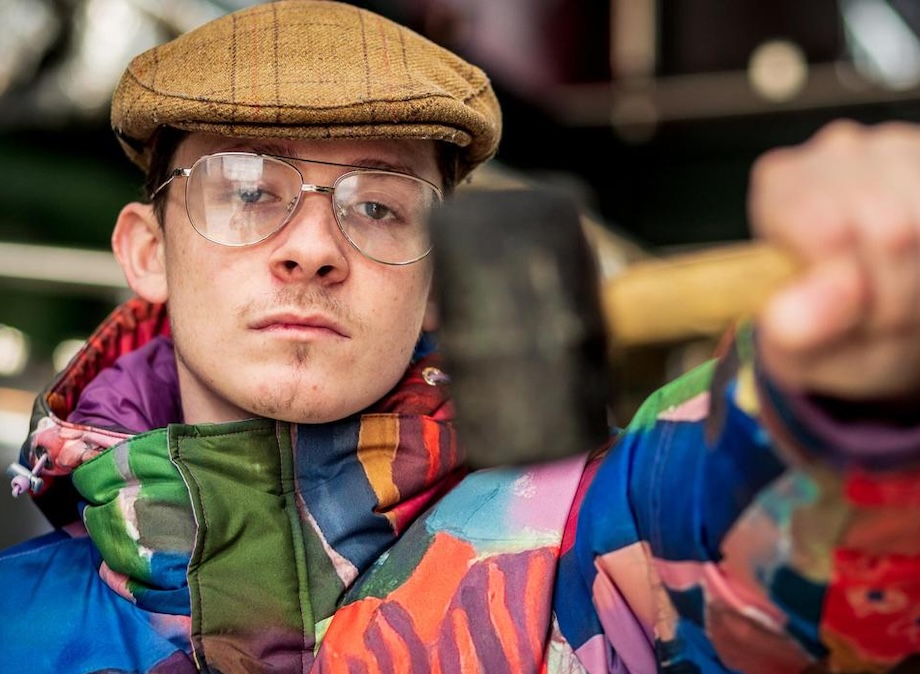
Strange Boy
The Irish for Hip Hop
As well as traditional music documentaries on Gael Linn and Tom Munnelly over the Christmas season, TG4 broadcast a new film on Irish hip hop earlier this month (2 January). Ó Bhéal, directed by Ciara Nic Cormaic, was premiered at the Galway Film Fleadh last summer and explores how aspects of Irish culture are now being incorporated into the genre.
While still a growing scene, Irish hip hop is having a bit of a moment in film and TV. Recent productions include Éire Eile from TG4 and Black Gate, a series that featured the scene in Limerick, and Out of Place from Féile na Gréine that gave an insight into the DIY music community in that city.
Four stories
Filmed in 2022, Ó Bhéal follows the stories of four Irish musicians – rappers Seán ‘Mory’ Ó Muirgheasa and Oisín Mac, producer and multi-instrumentalist Fehdah, and Limerick rapper Strange Boy. The press materials for the work claim that it ‘tells the story of a moment in time in the Irish musical landscape’.
Over its hour-long duration, the film moves between high-energy performances in tightly packed venues such as the Workman’s Club in Dublin and the Commercial in Limerick, and intimate moments of conversation, recording and collaboration in studios and some of the artists’ homes.
The film opens in the Workman’s Club Cellar, with Ó Muirgheasa on stage rapping in the Irish language. Moody black and white footage and close-up shots of the crowd combine with the closeness of the venue’s walls and ceiling to put the viewer right in the room. Ó Muirgheasa’s delivery starts the documentary on a rush and it feels like we are, quite literally, peeking into a new underground scene. An Irish text with English subtitles informs us that ‘Irish hip hop and electronic artists are drawing on the deep well of oral tradition, ancient poetry and sean nós singing. Breaking new ground to create a fresh genre of Gaelic music.’
While this holds some truth, the premise of the film starts to feel a little ambiguous. Irish hip hop artists are creating sounds and drawing on different elements of Irish culture, but Ó Bhéal seems to lump in the language, traditional music, sean-nós and storytelling together as one entity from which to draw inspiration.
The film progresses and we hear directly from the artists, in both Irish and English, about their work, inspirations and how elements of the traditions pertain to their music.
‘It’s about self-belief and courage … and having the confidence to express yourself as opposed to pretending to be someone else.’ claims Oisín Mac, in a conversation from his living room in Stoneybatter about the drive to create hip hop with a sense of Irishness. Ó Muirgheasa speaks about how the subgenre is growing and that now there are ‘hundreds of Irish artists [to] look to for inspiration’. This would seem like an ideal opportunity to touch on the work of, for example, Irish-language hip hop trio Kneecap, but they don’t get a mention even though they are arguably the most prominent Irish-language artists in the scene. And while Ó Bhéal portrays just a small snapshot of the scene, overlooking Kneecap seems like a missed opportunity to discuss the movement in more detail.
Spark of the artistic process
What Ó Bhéal adeptly captures though, is the spark of the artistic process. We see this in a scene featuring Strange Boy and his producer Enda Gallery in a recording studio in Kilfenora, Co. Clare, working on a song that will be included in their next album. Strange Boy – whose flavour of hip hop incorporates traditional Irish tunes and rhythms – is composing lyrics and performing them for Gallery, seemingly for the first time. Suddenly there’s a noticeable shift in the intensity and we see Gallery respond to the rapper’s words and performance. He suggests new arrangements and ideas – such as recording the sound of a sean-nós dancer dancing in hard shoes, which we eventually see included in the recording – and the two bounce ideas off one another over the sound of a banjo accompaniment. In these scenes it feels as if we are witnessing the creative flow in motion.
This energy follows into the next scene as we are brought to a pub in Doolin, Co. Clare, a traditional music session in full swing. As Strange Boy is preparing to perform, the whole pub becomes silent, the mood akin to when a traditional singer begins and the shushes and nudges spread across the room. The rapper begins a hip hop verse, edging into spoken word territory, accompanied by simple strums on guitar, the audience starting to lock on to his every poignant word – ‘Jumped in a bottle cause I thought I could stay sane … lost to my ways like so many others, hand on my heart cause nobody loves us … smile on my face, but inside it’s cold.’ What is most moving about this scene, and which perhaps shouldn’t surprise us given the performance, is the way the crowd are giving this set as much attention as the reels we heard previously.
The film closes with a series of scenes featuring Fehdah performing the sean-nós song ‘Amhrán Mhuínse’. Earlier in the film, the multi-instrumentalist claimed that ‘hip hop can bring so many genres together … so hip hop for me, is actually a mechanism of fusing together lots of different things’. We see this in her music, which melds hip hop with electronic, soul and West African traditions, and here, with Irish traditional song. Singing over minimal accompaniment on guitar and incorporating delicate, ethereal sampled electronics, her haunting vocals express the sum of all her influences in a way that is both old and new. ‘We’re meant to break the rules, mess with things, make older generations mad at us … otherwise, what are we here for?’
When viewed as a whole, Ó Bhéal is an important record of this unfurling scene, and its airing on TG4 shows a further expansion of the broadcaster’s reach. However, it feels as though the film falls short on a common thread to tie everything together. Ó Muirgheasa and Oisín Mac both perform in Irish, but Strange Boy writes in English, and the focus on him instead points to his innovations with traditional Irish tunes and sounds. With Fehdah, although it is clear that Irish traditional sounds and songs have influenced her work, the connection is a little stretched. A more focused storytelling approach could have elevated Ó Bhéal from a series of interesting but disjointed stories to a deeper exploration of a cultural moment.
To watch Ó Bhéal, visit www.tg4.ie.
Subscribe to our newsletter.
Published on 18 January 2024
Shannon McNamee is Assistant Editor of the Journal of Music.










